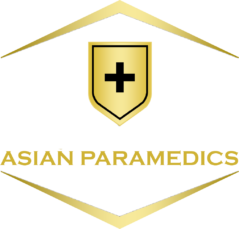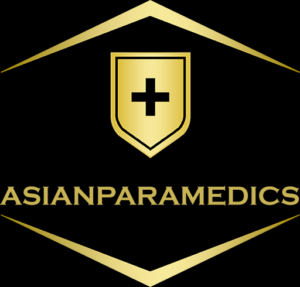Blood Banking MCQs:
These 300+ multiple-choice questions (MCQs) are designed to test your knowledge and understanding of various aspects of blood banking, a critical component of transfusion medicine. Blood banking involves the collection, processing, testing, storage, and distribution of blood and blood components to ensure their safe and effective use in medical treatments. The questions cover a wide range of topics, including blood typing, compatibility testing, transfusion reactions, blood component therapy, and the management of adverse events. By answering these questions, you will gain a deeper insight into the complexities and importance of blood banking in modern healthcare.

a. usually requires an exchange transfusion
b. most often occurs in first born children
c. frequently results in stillbirth
d. is usually seen only in the newborn of group O mothers ✅
a. Lea
b. P1
c. M
d. Kell ✅
a. Rh HDFN is clinically more severe than ABO HDFN
b. the direct antiglobulin test is weaker in Rh HDFN than ABO
c. Rh HDFN occurs in the first pregnancy
d. the mother’s antibody screen is positive in ABO HDN ✅
| Test | Infant | Mother |
|---|---|---|
| anti-A | 0 | 4+ |
| anti-B | 0 | 0 |
| anti-D | 0 | 0 |
| weak D | NT | 0 |
| DAT | 4+ | NT |
| Ab screen | NT | anti-D |
a. ABO hemolytic disease of the fetus and newborn
b. Rh hemolytic disease of the fetus and newborn; infant has received intrauterine transfusions
c. Rh hemolytic disease of the fetus and newborn, infant has a false-negative Rh typing
d. large fetomaternal hemorrhage ✅
a. ABO incompatibility ✅
b. Rh incompatibility
c. blood group incompatibility due to antibody to a low frequency antigen
d. neonatal jaundice not associated with blood group
a. estimation of WBC, RBC, and platelet counts
b. marked increase in immature neutrophils (shift to the left)
c. a differential to estimate the absolute number of lymphocytes present
d. determination of the presence of spherocytes ✅
a. bilirubin concentration by standard methods
b. change in optical density measured at 450nm ✅
c. Rh determination
d. ratio of lecithin to sphingomyelin
| Sample | ABO | DAT | Cord Hemoglobin |
|---|---|---|---|
| Mother | AB+ | 3+ | N/A |
| Baby | N/A | N/A | 10 g/dL (100g/L) |
a. no, as indicated by the cord hemoglobin
b. yes, although the cord hemoglobin is normal, the DAT indicates HDN ✅
c. yes, the DAT and cord hemoglobin level both support HDN
d. no, a diagnosis of HDN cannot be established without cord bilirubin levels
a. determine the identity of the antibody
b. identify candidates for amniocentesis or percutaneous umbilical blood sampling ✅
c. decide if the baby needs an intrauterine transfusion
d. determine if early induction of labor is indicated
a. A, CDe/CDe
b. A, cDE/cDE
c. O, cde/cde ✅
d. A, cde/cde
a. O, Rh-negative Red Blood Cells
b. O, Rh-negative Red Blood Cells, Irradiated
c. A, Rh-negative Red Blood Cells
d. A, Rh-negative Red Blood Cells, Irradiated ✅
| Sample | ABO | Rh | Anti-E | DAT |
|---|---|---|---|---|
| Maternal Blood | O | Rh-negative | anti-E in serum | N/A |
| Cord Blood | B | Rh-positive | anti-E in eluate | 2+ |
a. B, Rh-negative, E+
b. B, Rh-positive, E+
c. O, Rh-negative, E ✅
d. O, Rh-positive, E-
a. O, Rh-negative ✅
b. O, Rh-positive
c. B, Rh-negative
d. B, Rh-positive
a. lack red blood cell antigens corresponding to maternal antibodies ✅
b. be <3 days old
c. be the same Rh type as the baby
d. be ABO compatible with a father
a. Fresh Whole Blood
b. Red Blood Cells (RBC) washed ✅
c. RBC suspended in Fresh Frozen Plasma
d. heparinized Red Blood Cells
a. saline-washed
b. irradiated ✅
c. frozen and deglycerolized
d. group- and Rh-compatible with the mother
a. maternal serum
b. eluate prepared from infant’s red blood cells ✅
c. paternal serum
d. infant’s postexchange serum
| Test | D | D control | Weak D | Weak D control |
|---|---|---|---|---|
| Mother’s postpartum sample | 0 | 0 | 1+mf | 0 |
a. mother is a genetic weak D
b. mother had a fetomaternal hemorrhage of D+ cells ✅
c. mother’s red cells are coated weakly with IgG
d. anti-D reagent is contaminated with an atypical antibody
| Test | D | D control | Weak D | Weak D control |
|---|---|---|---|---|
| Mother’s postpartum sample | 0 | 0 | 1+mf | 0 |
a. report the mother as Rh-negative
b. report the mother as Rh-positive
c. perform an elution on mother’s RBCs ✅
d. investigate for a fetomaternal hemorrhage
| Test | Mother’s sample | Positive control | Negative control |
|---|---|---|---|
| Rosette fetal screen using enzyme-treated D+ cells | 1 rosette/3 fields | 5 rosettes/3 fields | no rosettes observed |
a. mother is not a candidate for RhIg
b. mother needs 1 vial of RhIg ✅
c. mother needs 2 vials of RhIg
d. the fetal-maternal hemorrhage needs to be quantitated
| Test | Mother | Newborn |
|---|---|---|
| Postpartum anti-D | 0 | 4+ |
| Rh-control | 0 | 0 |
| Weak D | +micro | NT |
| Weak D control | 0 | NT |
| Rosette fetal screen | 20 rosettes/5 fields | NT |
a. mother is Rh-positive
b. mother is weak D+
c. mother has had a fetal-maternal hemorrhage ✅
d. mother has a positive DAT
a. that she is a candidate for Rh immune globulin
b. that she is not a candidate for Rh immune globulin
c. a need for further investigation to determine candidacy for Rh immune globulin ✅
d. the presence of Rh-positive cells in her circulation
a. 1
b. 2 ✅
c. 3
d. 4
a. 0
b. 1
c. 2 ✅
d. 3
a. mother is Rh-positive
b. infant is Rh-negative
c. mother has not been previously immunized to the D antigen ✅
d. infant has a positive direct antiglobulin test

